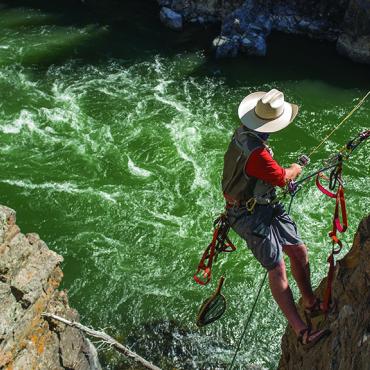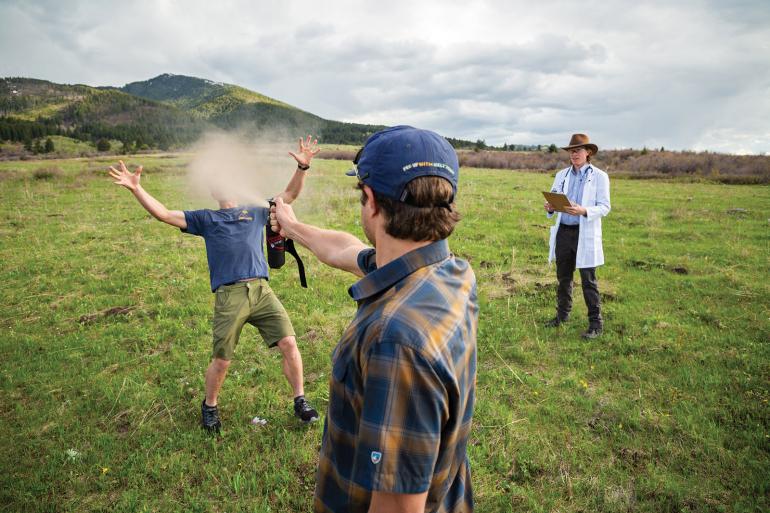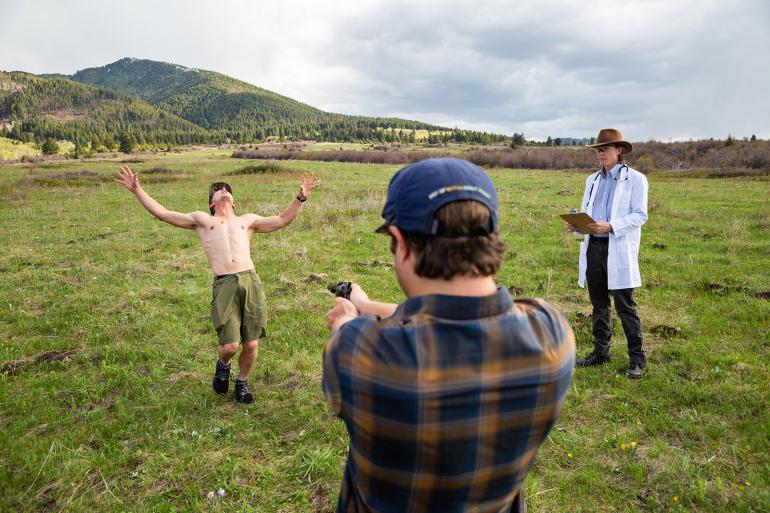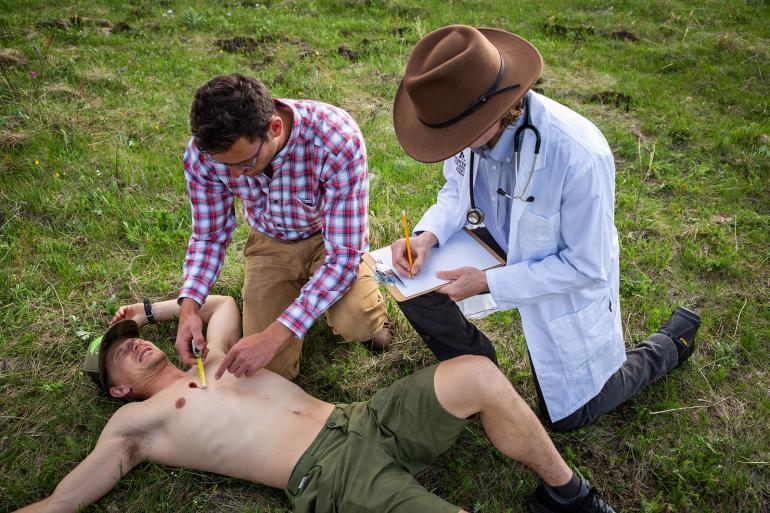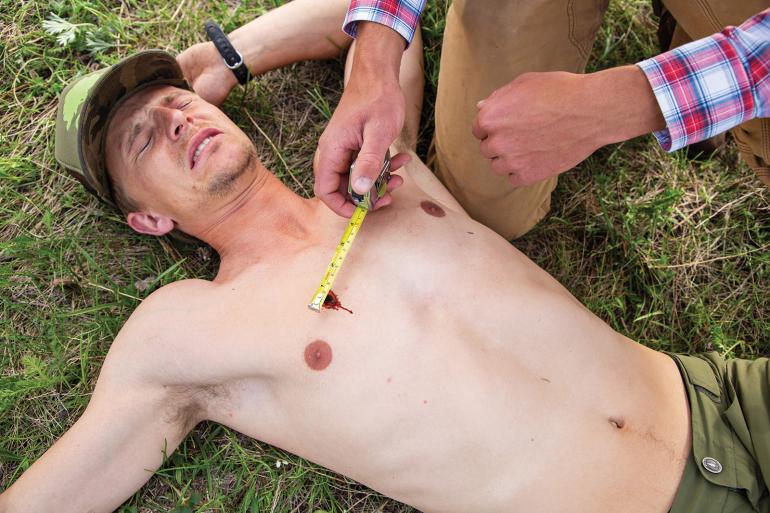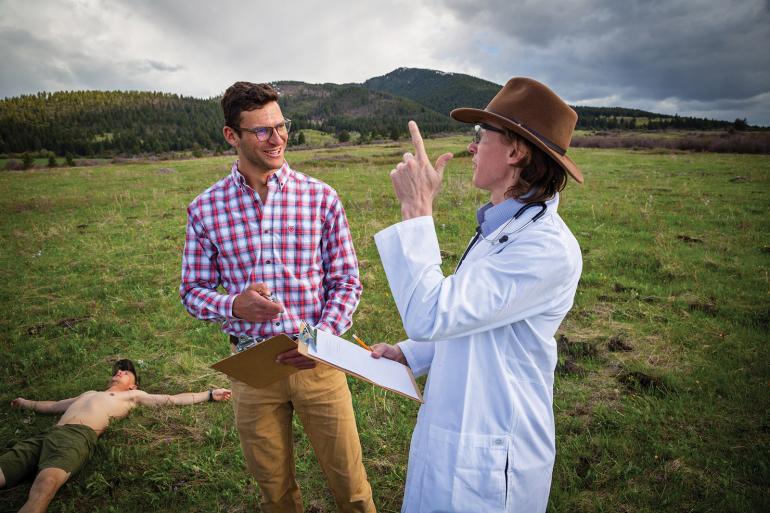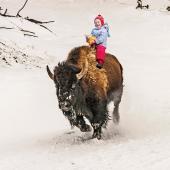Backyard Science: Bear Spray vs. Guns
The Effects of Bear Spray vs. Guns on Mammalian Subjects.
Abstract
There’s a plethora of folklore and anecdotal evidence regarding the efficacy of bear spray versus pistols in stopping a grizzly attack, but very little published scientific literature regarding the subject. Realizing this knowledge gap, we set out to quantify the effects of each. Unable to acquire bears, we settled on a comparable mammalian species: Homo sapiens. We shot a test subject with both bear spray and pistol in a controlled, outdoor environment, and found that each had robust stopping power. To determine if there was a statistically significant difference, we conducted a two-tailed t-test, and found there to be no variation between the two. Our results indicate that both can be effective when used appropriately.
Methods
We purchased standard bear spray canisters from an outdoor store in downtown Bozeman. On the firearm side, we opted for a .357 Magnum, a standard bear-defense pistol in the Intermountain West.
To avoid introducing bias, we drew straws to determine who would play the role of pissed-off grizzly bear. Corey drew the shortest straw, making him the subject of a bear-spray assault, and sealing his fate on the receiving end of the pistol. We then decided that Adam, as the self-proclaimed “best shot in the lab,” would handle the bear spray and firearm.
We measured out a set distance of 3 meters—the distance at which one might consider defense tactics in a real bear-attack scenario. The “bear” got a running start to mimic a charge, and we instructed the “victim” to fire only when the perpetrator reached the 3-meter mark. We quantified the effectiveness by “stopping power,” “terminal damage,” and several other categories.
Results
Adam nailed Corey squarely in the face with the bear spray. Corey immediately threw his hands to his face, and turned the other direction, fully incapacitated. Adam, however, only discharged half the can on his initial spray, and once “the bear” regained his bearings, Adam hit him with another shot to the face. The follow-up fully disengaged the bruin from the situation.
With the .357 Mag., a single, well-placed bullet stopped Corey in his tracks. Adam discharged the firearm slightly before the 3-meter mark, but still hit Corey in the chest. “The bear” wheezed for several minutes, but ultimately expired as a result of the gunshot. We measured an entry wound diameter of 11.2mm, and an exit wound of 9.6mm.
We quantified all other categories to determine the overall effectiveness of each defense mechanism (Table 1), and used a t-test to determine that there was not a significant difference (p-value > .05) between the two.
Discussion
Based on our modeling, both defense tactics would have been effective in a real bear-attack scenario. That said, however, there are certainly limitations to each. With bear spay, the victim typically only has one canister, and if it doesn’t fully deter the bear, the operator would be left defenseless. Guns have their own set of restraints, too. If Adam hadn’t hit Corey on his first shot, he wouldn’t have had time to fire subsequent rounds before his assailant was upon him. And even with an effective shot, there is still the issue of a dead body to deal with.
In the broader context of practical considerations, selection should be made based on personal preference, comfort level, and desired look. Price should also be considered. At $3 a round, ammunition is also far more expensive than a $50 can of bear spray, especially with dozens of practice shots needed to gain competence.
Overall, it’s tough to go wrong either way. Best-case scenario, take both. If concerned about the life of the attacking animal, deploy bear spray first. But objectively, as scientists, we think a hiker packing a pistol has way more sex appeal than one toting bear spray.
This article was originally published in Science and is reprinted with permission. All funding is through the National Science Foundation (NSF) and the Western Intermountain Mammalian Project (WIMP). Watch a full video of the project below:


